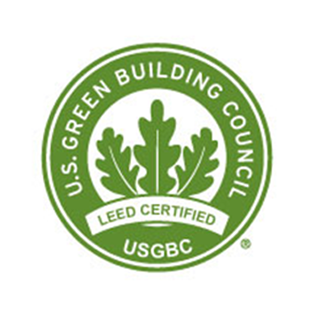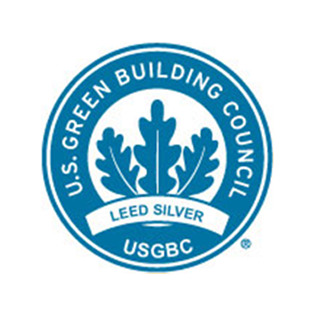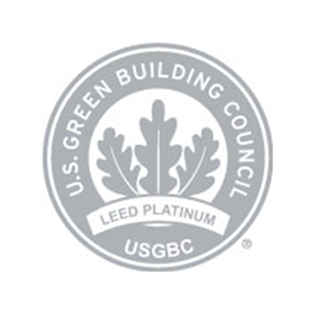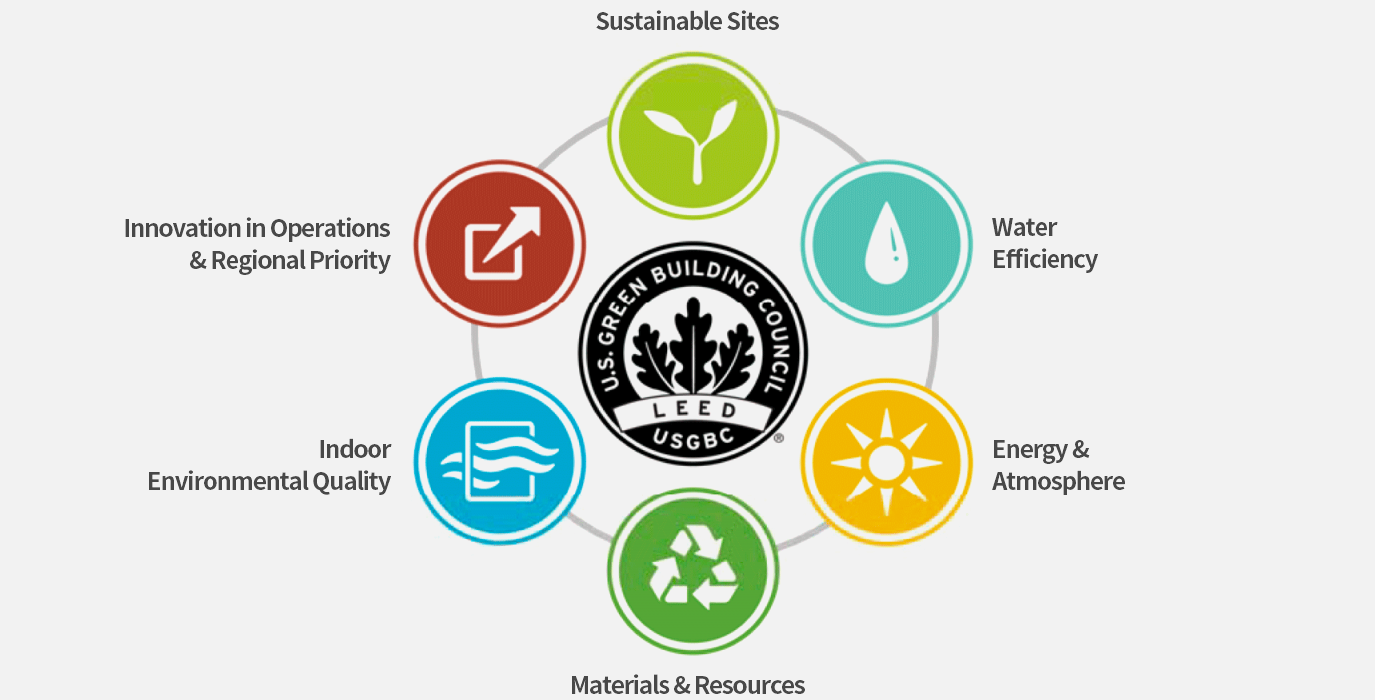
LEED Certification
What is LEED?
The Green Building Council (USGBC) developed and implemented the Green Building Council of the U.S. A Green Building Rating System that is highly recognized worldwide.

Why is LEED important?
LEED was developed to reduce greenhouse gas emissions effectively in the construction sector. It is part of our effort to realize sustainable development, save resources, and build environmentally friendly buildings. With LEED certification in place, industry efforts continue to improve the eco-friendly level of buildings.
The industry is compiling the benefits of LEED certification strokes as follows:
1. Global Standardized Building Asset Evaluation
2. Presentation of efficient operation of buildings
3. Using the optimal method of operation reduced maintenance costs
4. Expect a rise in rental rates and rent after certification
5. Expect a rise in rental rates and rent after certification
6. Voluntary eco-friendly for tenants presentation of Building Use Method
In advanced countries such as the U.S., the company actively uses LEED as a means of limiting bids according to LEED certification ratings and providing tax benefits for promoting eco-friendly architecture. Entrepreneurs are particularly favored because they can achieve real economic benefits as well as the positive image of an eco-friendly company through LEED certification.
How are the grades divided?
LEED rates 72 items divided into six categories from the design stage to the completion of construction and adds scores. The base score is 100 points, plus 10 additional points for a total score of 110. The rating is divided into four levels by score.

Certified
40~49점

Silver
50~59점

Gold
60~79점

Platinum
80점 이상
The evaluation sections corresponding to the base score are as follows:

1. Sustainable Land Plan
Evaluate the selection of a building site and the management of the site during the construction period. Minimize the impact of new buildings on existing ecosystems and waterways of building sites and encourage landscaping to match the surroundings. Key evaluation items include selection of transportation, good management, reduced erosion, reduced pollution, heat island phenomenon and prevention of construction-related environmental pollution.
2. Efficiency of water resources
Evaluate whether water resources are used efficiently. In particular, this assessment item is designed to induce water usage reduction through proper use of building materials and landscaping.
3. Energy and air pollution
This is an evaluation of the energy saving efforts you have made. Check energy usage monitoring, energy efficient design and system usage. The use of renewable energy and the application of energy saving know-how are also important evaluation targets.
4. Materials and Resources
Evaluate the management of various materials and resources used in construction waste and construction. It is an evaluation item to recommend continuously available materials selection, to include the production phase and distribution process of materials in the assessment to facilitate reuse and recycling, and to reduce waste.
5. Indoor environmental quality
As people spend more than 90 percent of their day indoors on average, indoor environments are a very important issue. In this section, we check and evaluate indoor air, natural light, outlook, and noise levels to improve the quality of life through management of the indoor environment.
LEED Authentication Phases
LEED authentication goes through the following steps:
1. Choose
Select the type of LEED certification you will receive, considering the type of building and site conditions.
2. Register
Register your project. The registration fee is US$1200. US$900 for USGBC Silver, Gold, and Platinum members.
3. Submit
Submit a certification application and pay for the accreditation review. Fees vary depending on the type of building and the area of the building.
4. Review
The process of reviewing a document by a certification authority. The review processor depends on the type of building.
5. Certify
Once you have completed the review phase and have reached a ‘positive decision’, you are certified. Otherwise, you may appeal.

